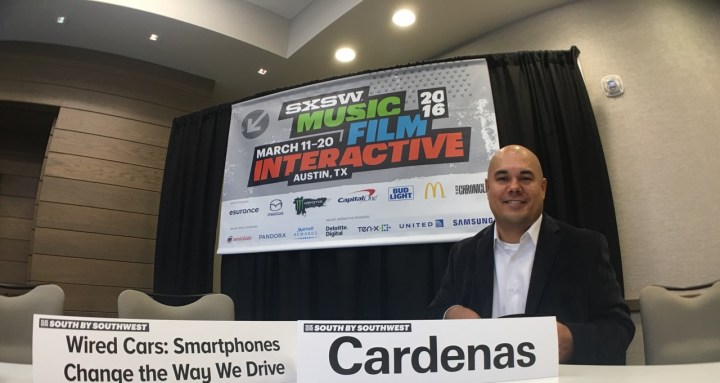
This story originally ran on Digital Trends Español — the Spanish-language version of the site you know and love.
Cars aren’t just a means of getting from Point A to Point B — they’re an extension of ourselves and a way to stay connected when on the go.
So says audio giant Pioneer, anyway. Following a talk at the 2016 SXSW show, Digital Trends Español spoke with Ted Cardenas, Vice President of Marketing, Car Electronics Division at Pioneer Electronics. Cardenas told us how the car is changing, and what it may mean for the future of our rides. Point B here we come!
Digital Trends Español: How is Pioneer doing right now?
Ted Cardenas: We are in a really good space. We are now a 78-year-old company, but we’ve been in the car space for about four decades. We did undergo a little bit of a change in our company last March. We sold a majority stake in our home electronics division and so that group is still going have the Pioneer brand name. As a result, we feel that we are the most powerful automotive electronics company in the world. We feel we are the most dominant, and we are very well positioned for both today and the future.
Related: Meet Alexis Tirado, the young Latina carrying the flame of Hispanic millennials
DTES: How much influence has the smartphone had in the car-audio industry?
Cardenas: I don’t know if I can quantify it in a percentage. Because now every consumer has one of those devices and they want the same connectivity in their car that they have in every other part of their life. That opens the window for the car stereo space to suddenly have a solution to literally make the car a smartphone accessory.
DTES: How long did it take you to realize that this?
Cardenas: It did take a few years. We always have been very fortunate to have very talented product planners and engineers who are not only looking at the technology of today but actively looking the technology of the future. Our product planner group came to us as a management group in 2008 and said, we have this company that has this service called “Pandora.” We were very fortunate to launch with Pandora in 2009 at CES, powered through the iPhone.
This capability of identifying the power of the smartphone, the fact that we have that network connection to be able to enable something that was really as revolutionary as Pandora — and now all of these other things that we can do like Apple CarPlay or Android Auto. Smartphones really opened that window.
DTES: In five to ten years, how does Pioneer see the future? With self-driving cars? And how will Pioneer play in that space?
Cardenas: It’s a really good question. In the near term, we think of maybe five to ten years, there will be an emergence of a lot of advanced driver assistance systems, ADAS, that will provide sensor technologies, communication technologies to give a driver better information … that’s the near term. When we look out a little bit further, maybe in a 20 to 30 year time frame, we know autonomous driving is coming, but there is a lot of work still to do. Today’s technology is not accurate enough.
Related: Finally, Apple CarPlay and Android will be available in Fords
DTES: But some companies like Mercedes or Tesla say they are ready …
Cardenas: They do and to certain extent are, but if you remember even navigation from ten years ago was not accurate. In terms of autonomous vehicles, yes it is possible, but it will be still 20 to 30 years before we see a really good integration. But given the potential for now opening up an entirely different world of entertainment, connectivity is huge. If you take the driver out of the equation, you are literally a passenger: Driving distraction is no longer an issue, so watching a movie, doing emails, reading a paper, doing anything, it is going to be a big opportunity for car electronic manufacturers like Pioneer.
Editors' Recommendations
- ‘The cars are the stars.’ How automakers are electrifying the racetrack
- How crowdsourced lidar could give your car X-ray-like superpowers
- See how popular car brands fared in new Consumer Reports survey
- Why driverless cars are ugly, and how BMW plans to change that
- Here’s how Volkswagen plans to electrify America’s most popular car segment



